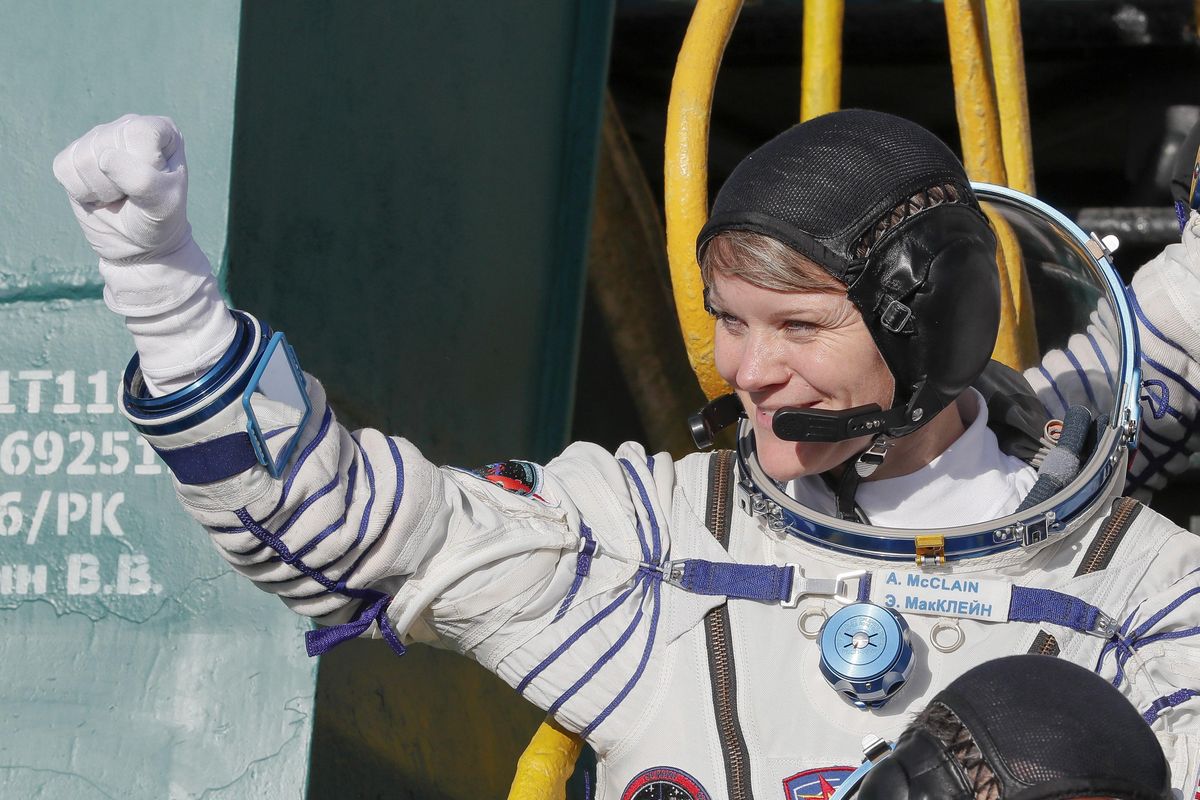Spokane astronaut Anne McClain boards International Space Station as Gonzaga Prep follows the journey

Spokane astronaut Anne McClain made it safely Monday to the International Space Station as students at her alma mater in Spokane watched, some in awe.
McClain, who graduated from Gonzaga Prep in 1997, blasted off and traveled at 7 miles per second in a Russian Soyuz MS-11 that orbited the Earth four times and successfully linked with the space station.
At Gonzaga Prep, students filed into science classrooms to watch. And who knows – in a few months, maybe they’ll even check in over the phone.
“I’m just blessed to see a great person achieve her dreams,” said 16-year-old junior Rigee Olavides. “It’s really inspiring to see someone who dreamed of becoming an astronaut become one.”
Olavides was one of many students crammed into a large science classroom in the school’s first floor Monday morning, anxiously watching a live video feed from NASA showing McClain and two other astronauts navigate a Soyuz spacecraft traveling about 10 centimeters per second toward a docking bay on the International Space Station.
NASA and Roscosmos said all onboard systems operated normally and the astronauts felt fine during the six-hour trip to the space station. After two hours waiting in their capsule to confirm their ship was firmly docked to the station, they exited the capsule to join three astronauts already aboard the orbiting outpost at 11:40 a.m. Spokane time.
The six-month-long mission, called Expedition 58, launched from Russian-leased Baikonur cosmodrome in Kazakhstan at 3:31 a.m. Spokane time Monday, just as planned. McClain, along with David Saint-Jacques of the Canadian Space Agency and Oleg Kononenko of the Russian space agency Roscosmo, made contact with the ISS six hours later at about 9:30 a.m., after making four orbits of the Earth.
Moments before the craft was set to dock, a message played over the Gonzaga Prep’s PA system, urging teachers to allow their students to wander into the nearest science classroom to watch history in the making for one former student.
“She’s helping with this landing,” said Karen Round of McClain, reminding her AP biology class of what was at stake. “She and the other two astronauts.”
One name that came up often between teachers and students was Shari Manikowski, a math teacher who taught and coached McClain. The two stayed connected throughout the years, even as McClain’s career took her from Gonzaga University to West Point and eventually to NASA.
Manikowski was even invited to watch the launch and docking from NASA’s Christopher C. Kraft Jr. Mission Control Center in Houston, where she was Monday morning while her students sung her praises back in Spokane.
“She’s really big on trying to inspire students,” said 17-year-old Molly Niedermeyer, a senior who last year took algebra with Manikowski.
“She really tries,” added 17-year-old senior Ned McEwen.
As the clock struck 9:30 a.m., and students and faculty marched into Round’s classroom, a large screen in the front of the room showed video of an unexciting scene of a cross hair, flanked and surrounded by words written in Russian, headed slowly toward a target.
The relative silence was broken by Gonzaga Prep President Michael Dougherty, who burst into the room with excitement.
“She texted Ms. Manikowski on the way to the launch, saying thank you for being my teacher,” he told the students. “Nothing could be cooler.”
After a few moments, a voice over the video feed from NASA suggested things went according to plan. “Capture is confirmed,” he said. “Good contact,” another voice chimed in.
And then, silence with a live shot of NASA scientists seated behind computer terminals.
“I get emotional watching it,” said Round, who started teaching at Gonzaga a year after McClain graduated. “There’s just this energy and enthusiasm behind it. And the awe surrounding it.”
McClain, Saint-Jacques and Kononenko will spend more than six months at the space station doing research and experiments in biology, Earth science, physical sciences and technology.
The Associated Press contributed to this report.